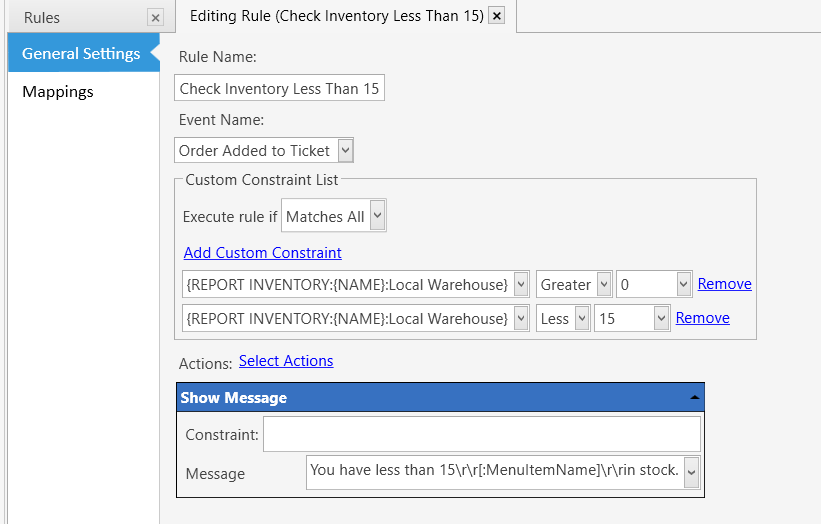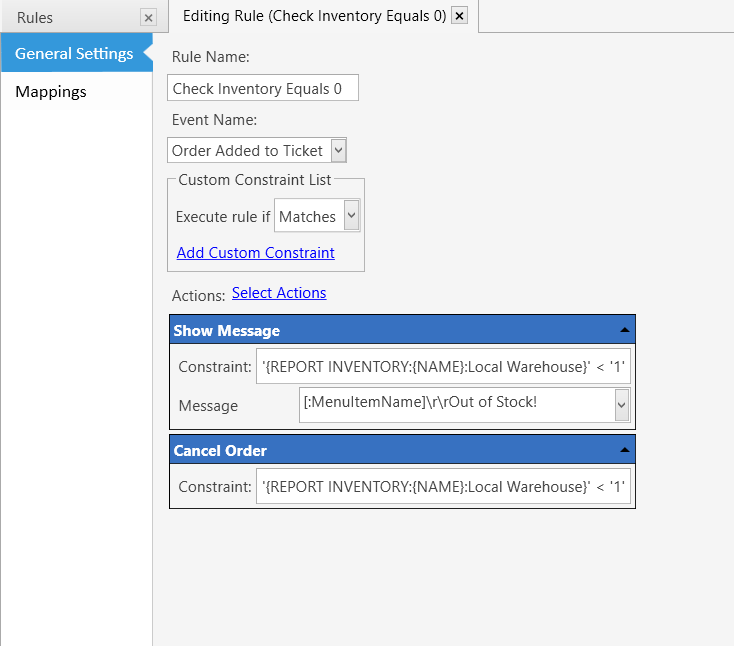Hello everyone!
I hope you are having a great day!
So I looked on the forum for some sort of low stock warning and found this -> Low stock warning
Summary:
I made a rule that checks if there are less than 15 items in the inventory. If its true, it pops up a message “You have less than 15 [:MenuItemName] in stock.”
Than, I made a rule that checks if there are 0 items in stock and if its true, it cancels the order.
Then I had encountered tiny problem because both rules are always checked and when both were true ie. I had 0 packets of cigarettes in stock it would play both messages. Which was annoying.
From here I played with constraints and their conditioning. I got confused as to both things seem to work and I am not sure whether that was a lucky mistake or it can be used in this manner.
In first picture I have my values and conditioning in Custom Constraint list - I tried having it within the Action constraint using && (and logical operator) but it didnt work at all.
In this picture I have my condition in Constraint within the Action
So does this basically do the same thing?
Why is the value within ‘’ inside the Action Constraint? Does it read it as a string?
Is there some sort of documentation about these tiny details on the forum?
Kind regards

